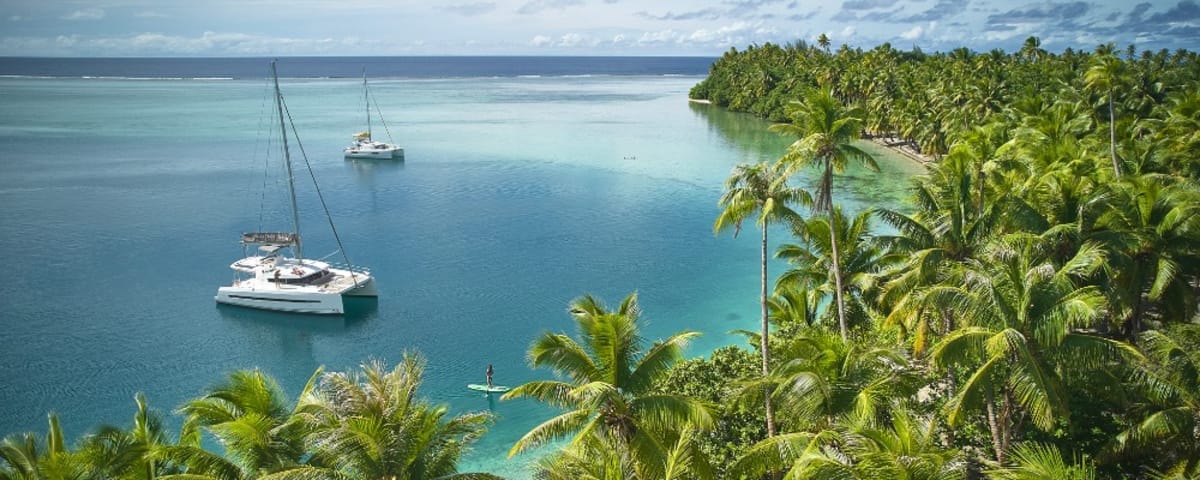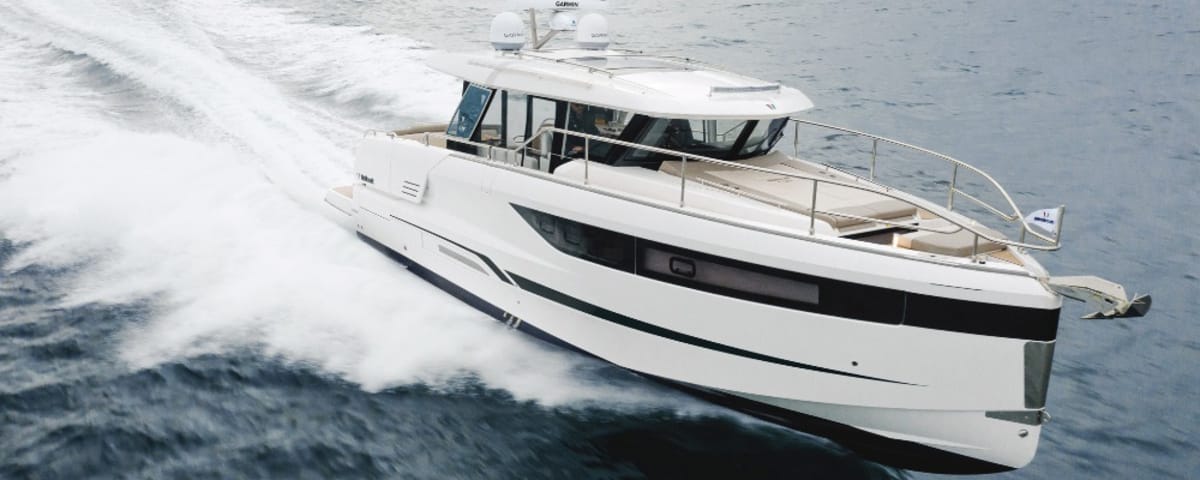The Bimini Top: Your Essential Companion for Boating Comfort
A Shield Against Sun and Heatstroke
The primary function of a bimini top is clear: to provide shade to the cockpit. During summer cruises, whether in the Mediterranean or the tropics, it quickly becomes essential to avoid prolonged sun exposure.
“After a few days of sailing without a bimini in the middle of summer, you feel like you’re grilling on a hotplate,” says one boat owner. “Since I installed one, the crew is much more comfortable, especially during watches in full sun.”
Manufacturers offer custom-made biminis, adapted to different cockpit configurations. Some brands specialize in UV-resistant and water-repellent fabrics, ensuring excellent durability against the elements.
Effective Protection Against the Elements
Contrary to popular belief, the bimini doesn’t just protect from the sun. In case of showers or drizzle, it allows you to stay at the helm without getting soaked, especially if the wind is light. Combined with a sprayhood, it can even form an almost complete shelter for the cockpit.
“I installed a sprayhood and a bimini connected by a zippered canvas,” explains one sailor. “When it rains, we can stay outside without being completely drenched, which is a real plus, especially on long cruises.”
Side closure options allow you to transform the whole thing into a veritable semi-enclosed cockpit, particularly useful in the shoulder season or in cooler latitudes.
Increased Comfort While Sailing and at Anchor
The bimini is particularly appreciated during long voyages. At the helm, it prevents sunstroke and reduces fatigue associated with prolonged sun exposure. But it is at anchor that it takes on its full importance.
“When we stop, we spend 90% of our time in the cockpit. With a bimini, we gain a real shaded living space,” says one skipper.
On catamarans, the rigid bimini has become standard, often integrated directly into the boat’s design. This trend is extending to cruising monohulls, where shipyards offer fixed and robust solutions adapted to offshore sailing.
Rigid or Flexible: Which Model to Choose?
Biminis come in several variations:
- Flexible bimini on stainless steel hoops: the classic solution, ideal for most cruising sailboats.
- Rigid bimini in composite or aluminum: more resistant and durable, often installed on large units and catamarans.
- Folding bimini: allows you to fold the structure in case of strong wind or to improve visibility while sailing.
“I opted for a removable bimini,” explains one boat owner. “When we want to enjoy the sun or observe the sails, we fold it up in the blink of an eye.”
Outfitters now offer adjustable systems with quick fasteners, making biminis more modular and easy to disassemble when needed.
An Investment That Changes Life on Board
The price of a bimini varies depending on the materials and size, ranging from $1,500 to $5,000 for a classic model, and well beyond for a custom-made rigid version. But one thing is certain: once it is installed, it is difficult to do without it.
“It’s a bit like a sun awning at home: as long as you don’t have it, you do without it, but once you get a taste of it, it’s impossible to go back,” concludes one skipper and boat owner.
Whether in the Mediterranean, the Atlantic or the tropics, the bimini has become much more than a simple accessory. It is a true element of comfort and protection, which transforms the sailing and living experience on board.
Original Tips for Getting the Most Out of Your Bimini
- Add flexible solar panels
Many boaters attach flexible solar panels to their bimini to optimize energy production without losing space. - Install a solar shower
By adding a solar water bag suspended under the bimini, you get a practical and pleasant extra shower after a swim. - Create mood lighting
With waterproof LED strips, the bimini can become a soft and economical light source for evenings at anchor. - Add storage pockets
Some models allow you to integrate side pockets to store sunglasses, sunscreen or navigation guides. - Optimize ventilation
Attaching a mosquito net under the bimini creates a sheltered area from insects, ideal for evenings in tropical anchorages. - Transform the bimini into a shade extension
With a side sun awning, you extend the shade over the cockpit or even on the deck, perfect for days when the sun is low. - Install a hammock under the bimini
For those who want a nap in the shade while enjoying the breeze, attaching a hammock under the bimini between the hoops is a great idea.
A well-designed bimini is not just for shade. With a few tips, it becomes a real asset for comfort and autonomy on board. Once adopted, it’s hard to sail without!
Enjoyed this post by Thibault Helle? Subscribe for more insights and updates straight from the source.


